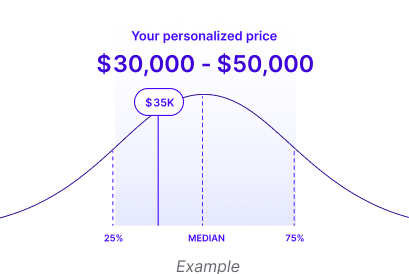Siemens
$66,479–$158,587per year
Fast, fair, easy pricing. No sales call required.
Siemens
|Visit siemens.com
How much does Siemens cost?
Median contract value
$120,333
Based on data from 3 purchases.per year
Median: $120,333
$66,479$158,587
LowHigh
See detailed pricing for your specific purchase
AI Quote Analysis
Upload your quote to check if you’re getting a fair price, under 2 minutes and completely free.

How does Siemens price and package their products?
View pricing on Siemens's website
Product:
Standard
N/APayment Terms: N/APopular Features: N/A
Negotiating with Siemens
Negotiation Tips
Introduce alternative solutions from competitors as a leverage point. Make it clear to Siemens that you are evaluating several options that offer similar features at a lower price. This tactic emphasizes the urgency and financial constraints your organization is under, encouraging Siemens to provide you with a better deal.
Request the removal of any auto-renewal clauses in the contract. Stress that this is a requirement from your finance/legal teams to ensure you maintain flexibility and leverage in future negotiations. Companies have found success in negotiating the removal of auto-renewals to keep future options open without penalty.
Discuss the potential for waiving overage fees, particularly if they have been an issue in the past. Emphasize that predicting growth is easier with a stable fixed rate, and that the company is willing to commit to usage targets if the overage structure is amended or waived completely.
If you plan to increase your user base significantly, use this as a bargaining chip to negotiate lower rates. Emphasize to Siemens that your finance team expects better unit pricing as utilization grows, which can substantially lower costs long-term.
Challenge the notion of discounts being one-time only. Assert that the discounts provided should be applicable to future terms given their historical usage and the importance of the partnership. This could open discussions for improved pricing on future renewals.
Considerations when buying Siemens
OwnershipSiemens AG
Fiscal year endSeptember
Best months to buyAugust, September
Payment TermsNet 30, Net 60, Net 90
Upgrades/downgradesYes, Siemens offers both upgrades and downgrades for its services, making it easy for users to adjust their resources as their needs change.
Redline thresholdRedline threshold estimate is $500k.
Additional Info
What is Siemens?
The principal divisions of the company are Industry, Energy, Healthcare, and Infrastructure & Cities, which represent the main activities of the company.Siemens's 3 Product
Siemens
The principal divisions of the company are Industry, Energy, Healthcare, and Infrastructure & Cities, which represent the main activities of the company.Siemens NX Industrial Design - Mach 3
The principal divisions of the corporation are Industry, Energy, Healthcare, and Infrastructure & Cities, which represent the main activities of the corporation.Vesys
We provide next services: Mechanical Design Specialty artillery - Autodesk Inventor, Software Deveopment, Website development.